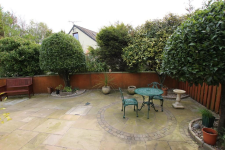Leafbringer
Active member


Sparrows still most spotted bird in UK gardens but population is declining
Number of house sparrows spotted has dropped by nearly 60% since 1979, according to RSPB annual survey
I also want to know if scientists were able to determine the main cause of the House Sparrow's decline (if there is one), or if it actually caused by multiple factors? (e.g. habitat loss, avian malaria, lack of insects, cell phone tower radiation, air pollution from unleaded petrol, etc)







